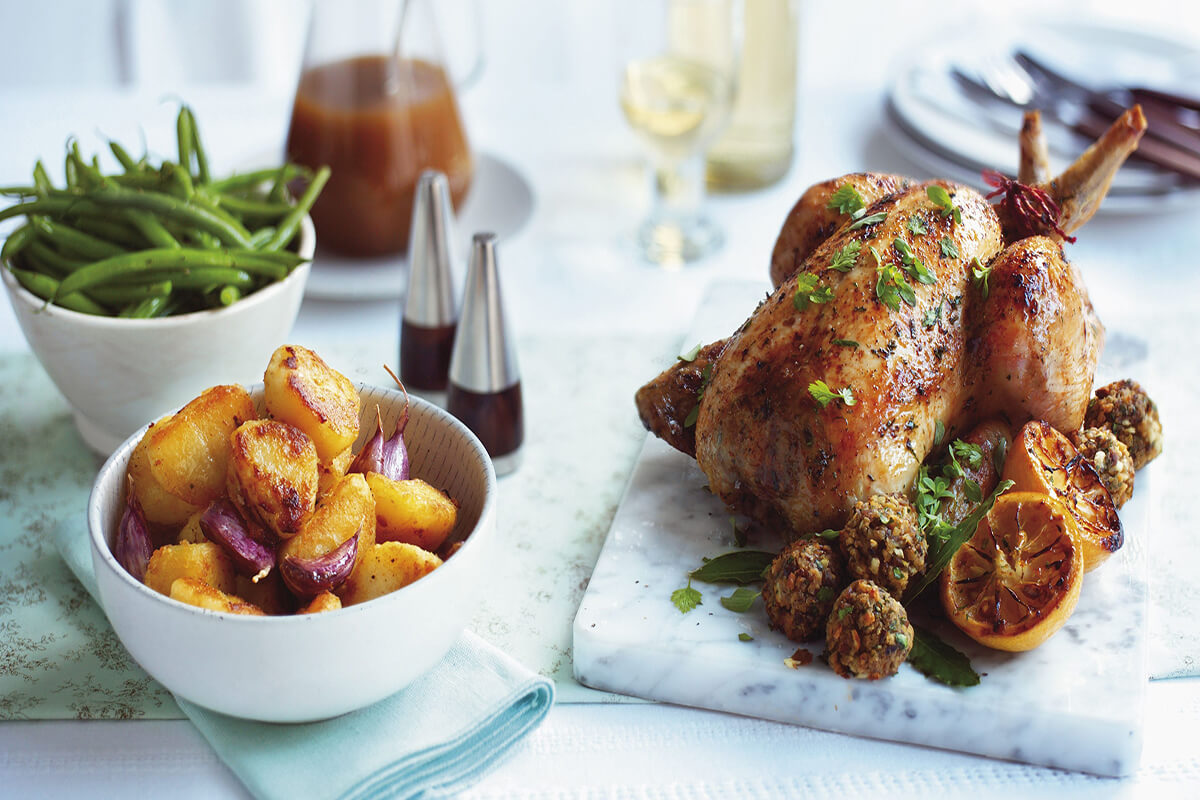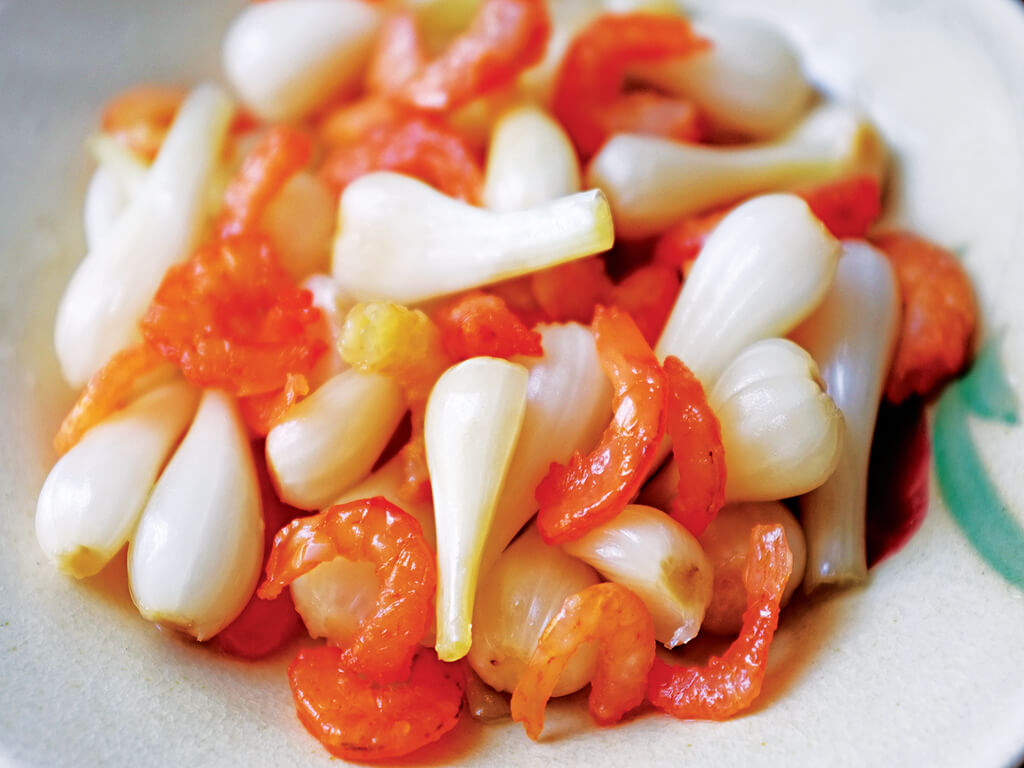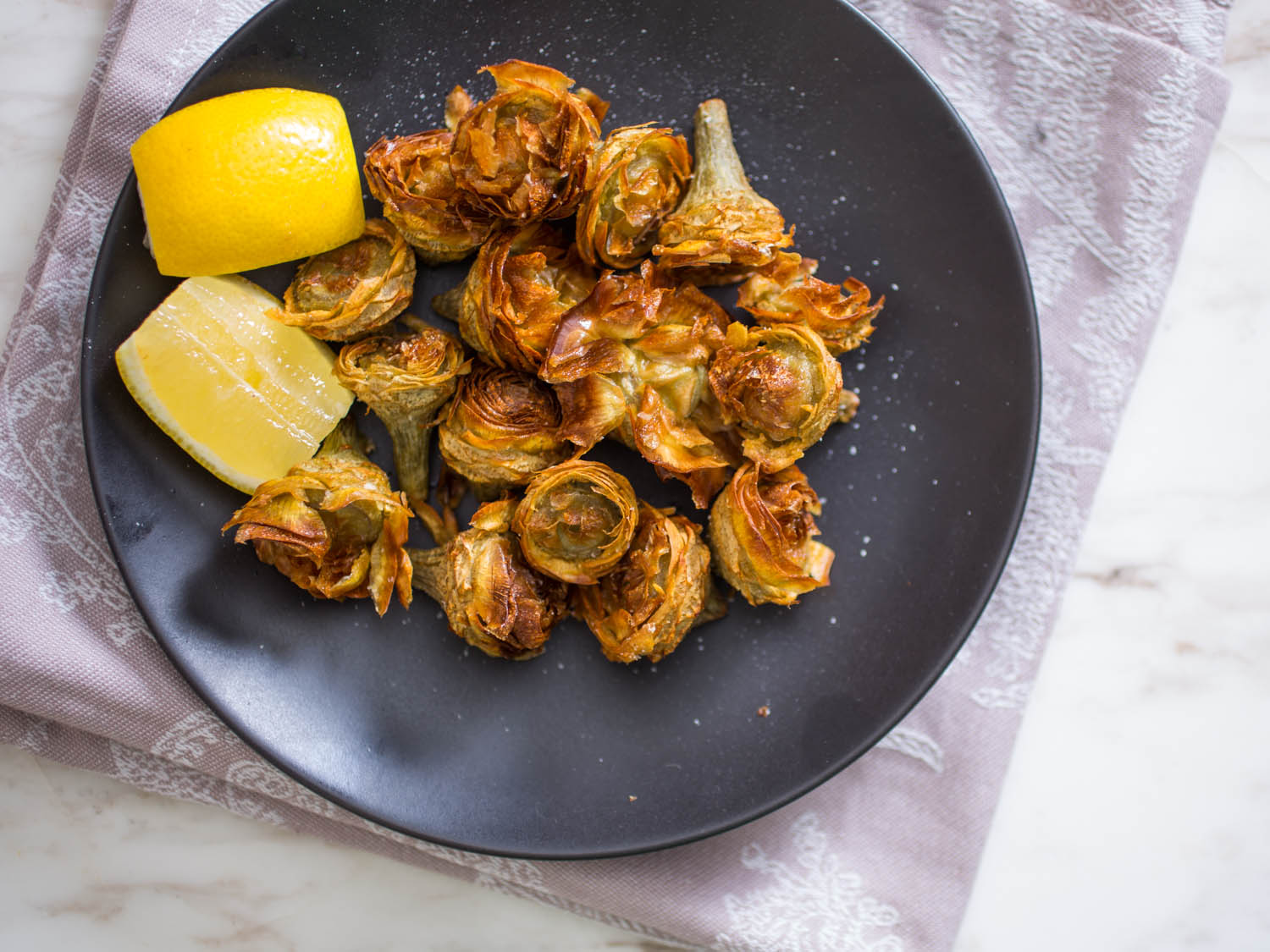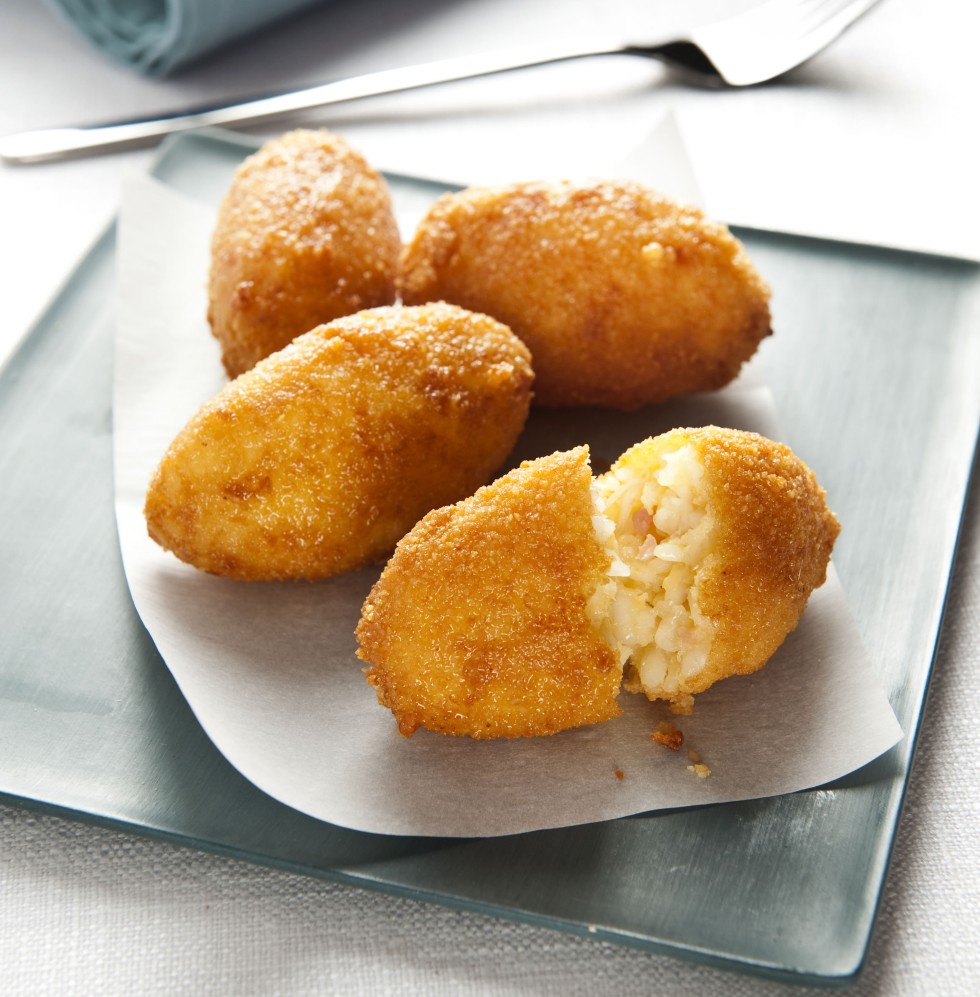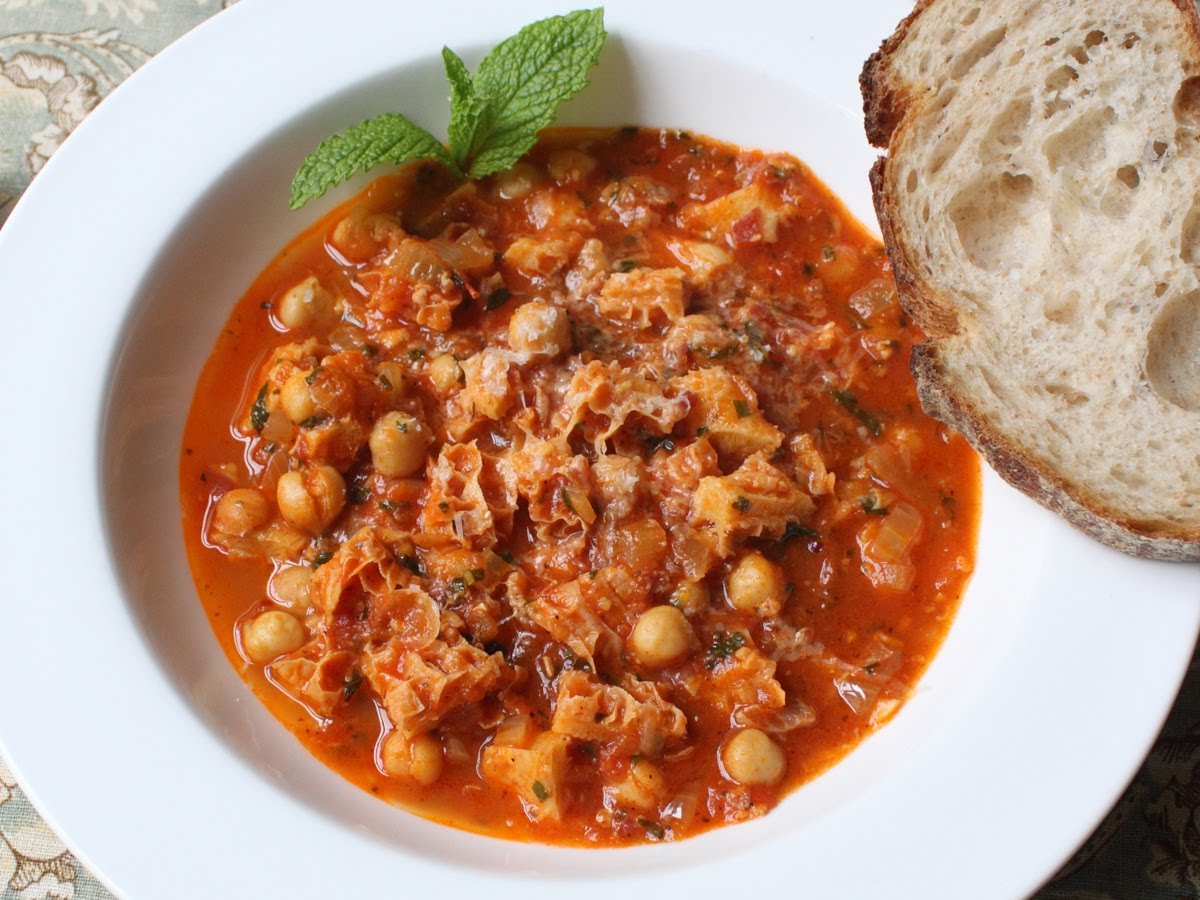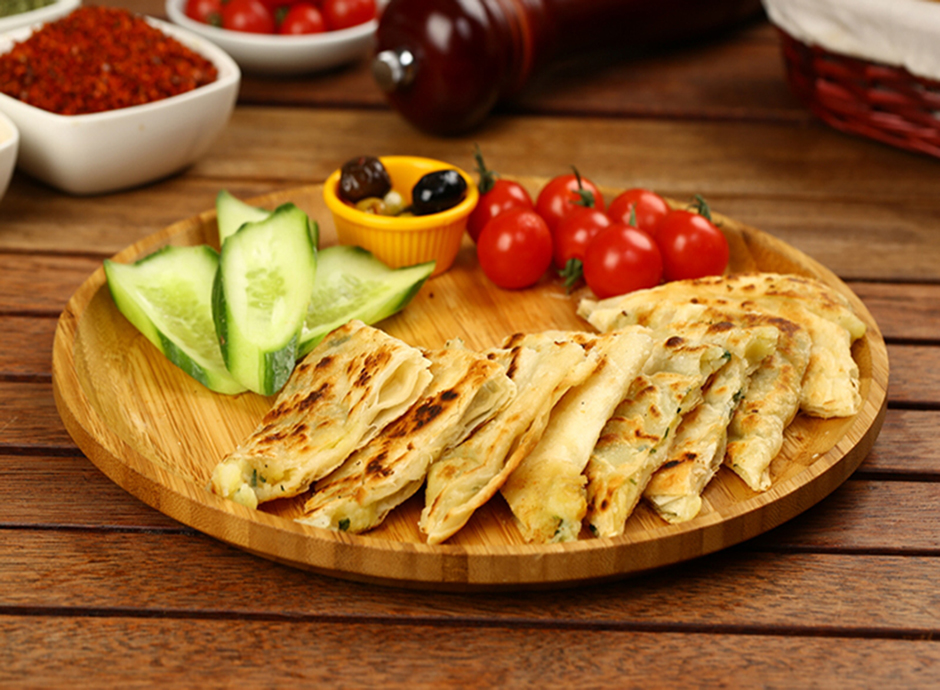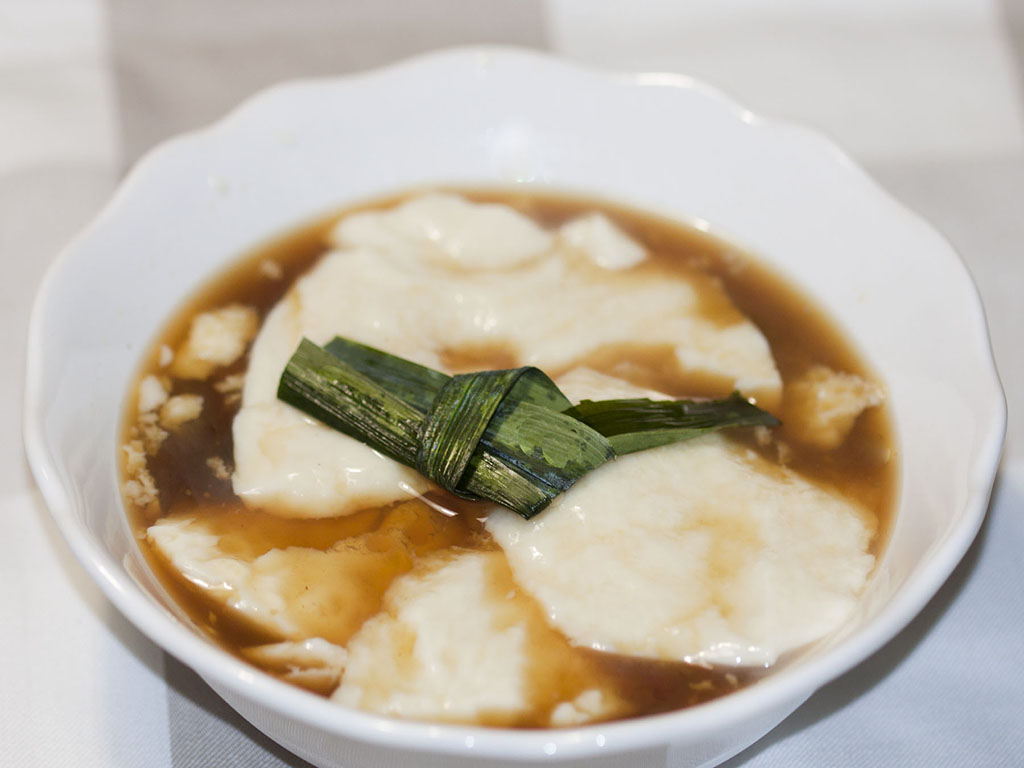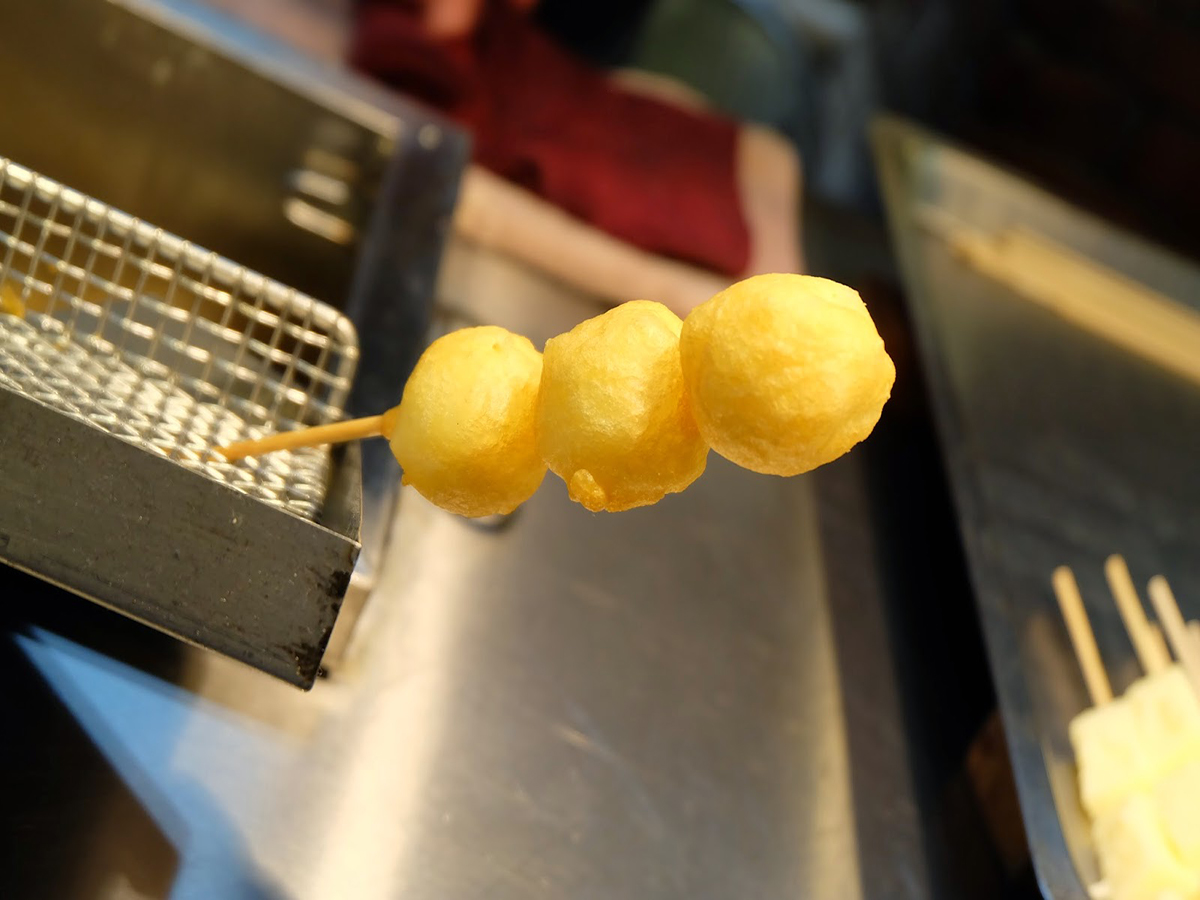Carbonara
The most debated dish in Rome is not to be missed. Romans argue over its origins (some say it is the dish coal miners — the carbonari — would eat, and others attribute it to postwar occupation, when American soldiers would mix bacon and eggs with pasta), whether it should have Parmigiano Reggiano and Pecorino Romano cheese or just the latter, and whether pancetta or guanciale (pork cheek) is to be used. It's a dish that must be eaten in a trattoria — Da Enzo, a hole-in-the-wall family-run trattoria in Trastevere, serves one of the best. Theirs is creamy with the right saltiness, and chunky but super crispy pieces of guanciale.
Fried artichokes (carciofi alla Giudea)
Good luck getting through a meal in Rome without someone trying to offer you an artichoke. Best eaten in the fall and winter months, Romans eat artichokes fried, baked, roasted — you name it. One of the most popular dishes from the Roman-Jewish repertoire is carciofi alla Giudea (Jewish-style artichokes). They are double fried, crispy and salty, and look like flowers. Nonna Betta, located in Rome's ghetto area, is a longtime local favorite. Here they serve kosher versions of many of the Roman classics you'll find in trattorias, but their artichokes (and all fried treats) are standouts.
Supplì
The supplì is Rome's favorite street snack. Call it an arancino (the Sicilian fried rice ball equivalent) to the Romans at your own risk! They are very proud of this crumbed and fried ball of risotto, usually with tomato ragù and a mozzarella center. Try one at the tiniest of take-out joints in the city: I Supplì (as the name might suggest) makes some of Rome's best. During the lunch rush, look for the crowd of people spilling onto the street and patiently wait your turn. For just a few euros, you might just stumble upon the tastiest and cheapest lunch of your life.
Cacio e pepe
Don't overlook the other Roman classic pasta, cacio e pepe. Pepe is pepper and cacio is Roman dialect for cheese, and yes, two-ingredient pasta might not sound all that exciting, but this is not to be missed. Creamy and rich, it's usually served with tonarrelli, a long, spaghetti-type egg pasta. The version at Flavio al Velavevodetto is outstanding and the setting — an ancient Roman dumpsite — is even more special. Cacio e pepe is on menus all over Rome, but eating it at a neighborhood trattoria like Flavio's is hard to beat.
Trippa alla Romana
True Roman cuisine has its origins in offal. Workers at the abattoir in the now gentrified neighborhood of Testaccio were historically paid in leftover animal parts (often referred to as the fifth quarter), and so generations of Roman women would make do with was brought home, from cow's stomach (tripe) to lungs, heart, and the rest. Trippa alla Romana (cooked Roman style) is made in a rich, tomato-based sauce; one of the best places to try is at this Roman hangout, where no doubt you'll feel like a local.
Pizza
Pizza Romana is different to the Neapolitan cut. Where pizza in Napoli is thick crust, Roman pizza is paper-thin, almost burnt looking. So don't send it back if it lands at the table with a charred crust. Neighborhoods like Testaccio, just a couple of miles from the center, are where some of Rome's best food can be found. Da Remo is a local favorite—like most classic Roman pizzerias, it isn't flashy and the service is hit or miss, but the pizza rarely disappoints! Start off like the Romans do with fritti—fried treats like supplì, mozzarella balls, and stuffed and fried zucchini flowers. The Margherita is always a sure bet here.
Source Businessinsider


